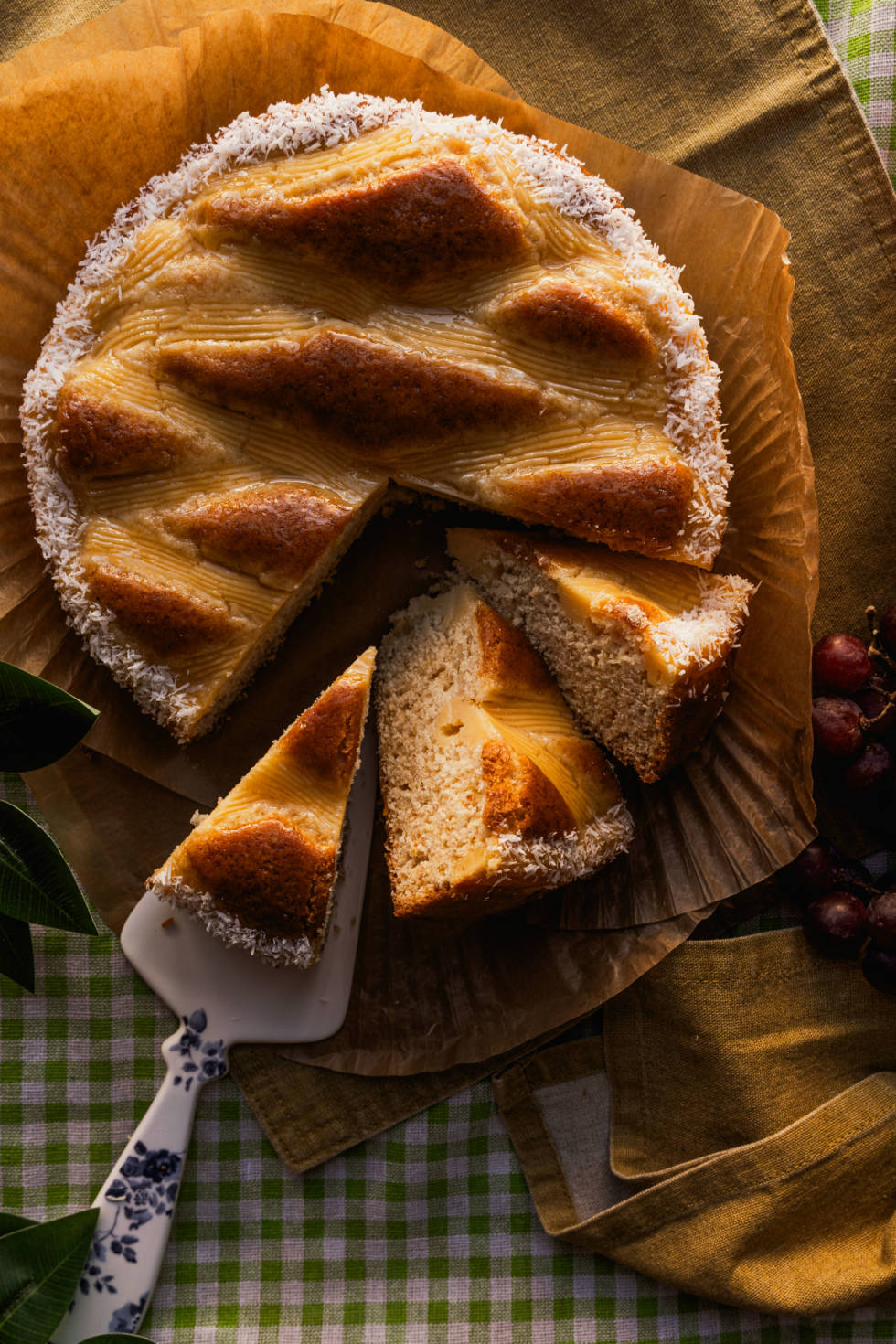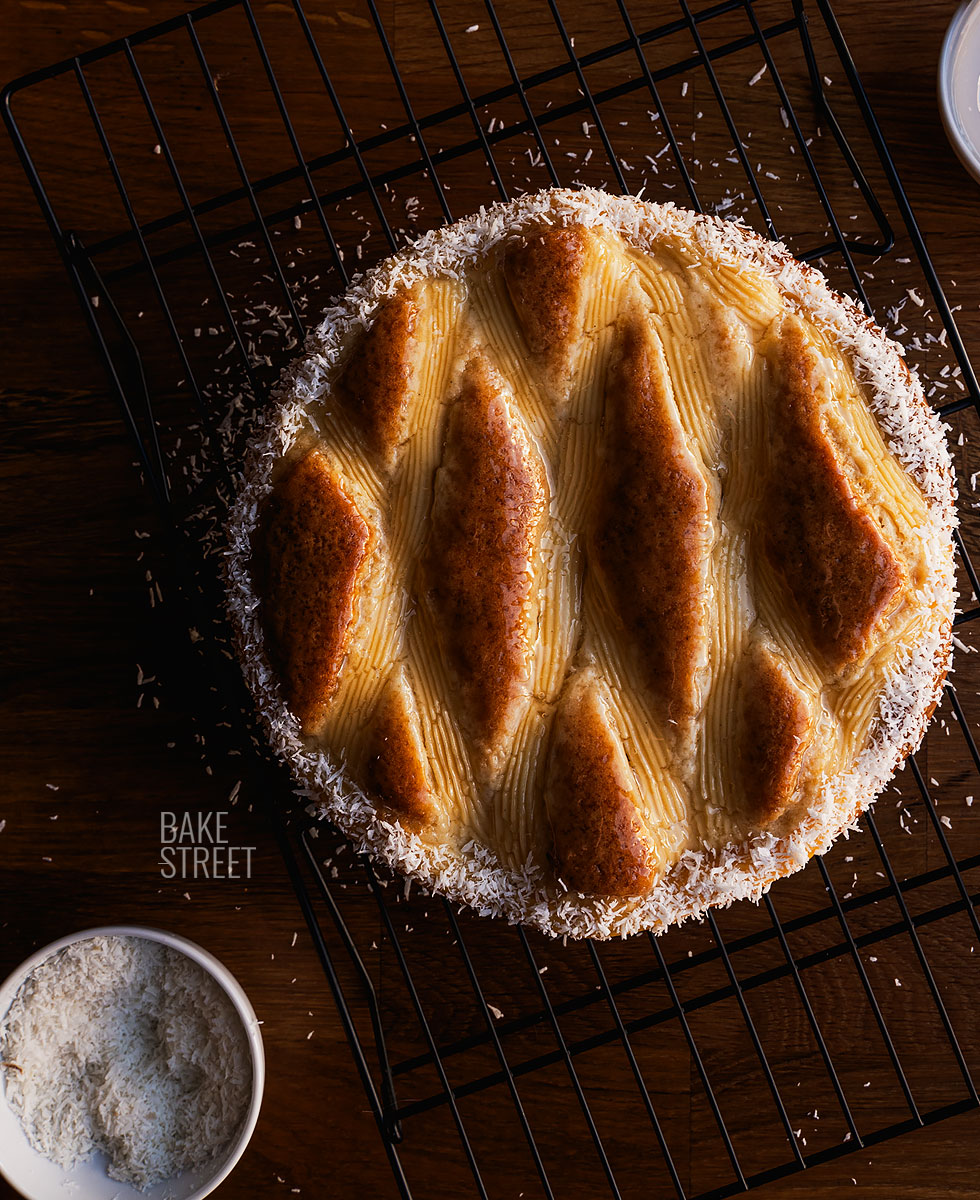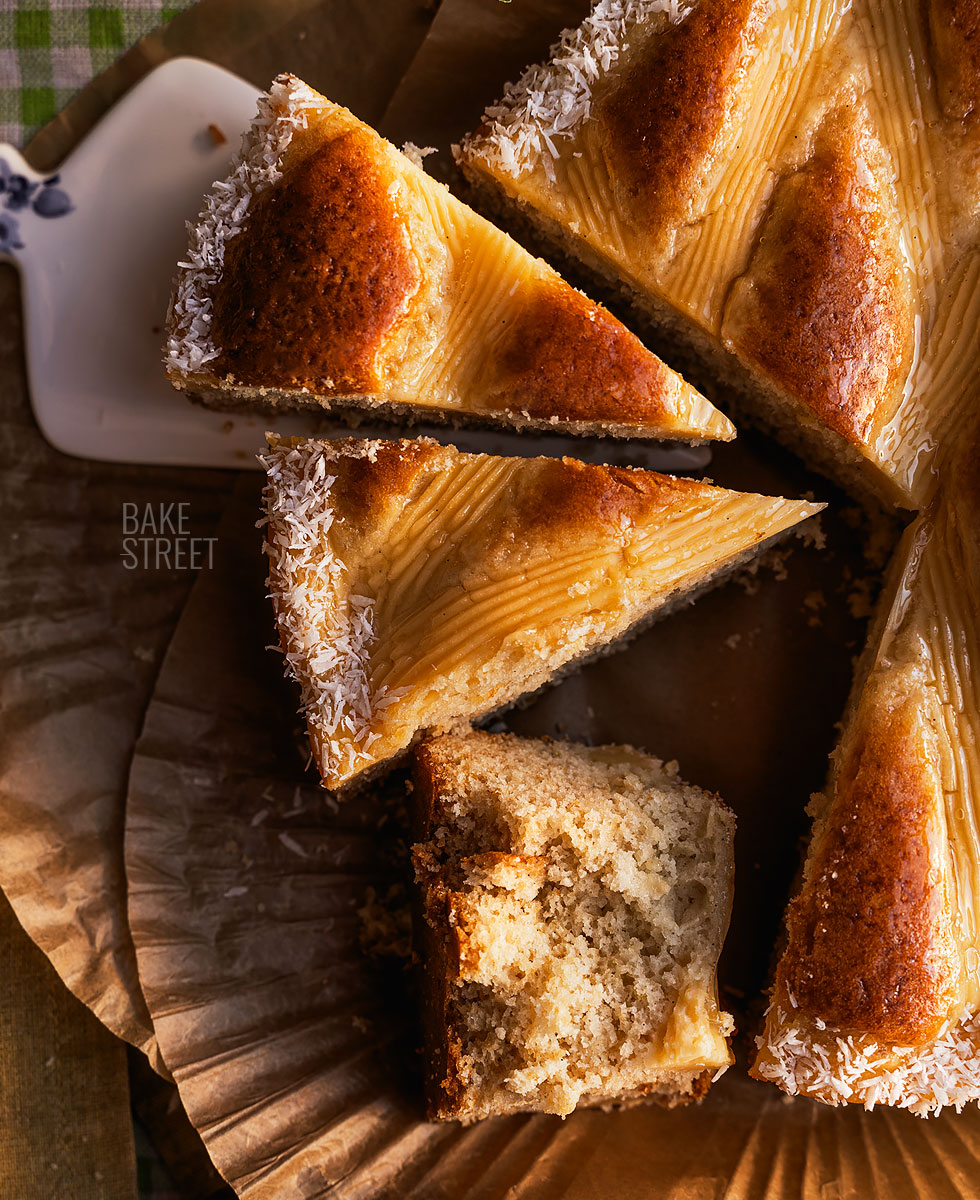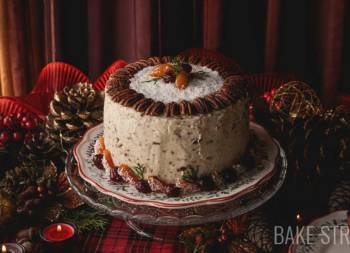
Torta matera, Argentinean sponge cake with pastry cream
It’s been a long time since I left you one of those super simple recipes, without difficulty or complication in the process and that you enjoy a lot. Today I bring you a Matera Cake or Torta matera, Argentinean sponge cake with pastry cream that, I tell you, is a complete marvel despite its simplicity. Before continuing, I would like to tell you that it has been a recipe that I have had to elaborate several times. Not because it is complicated, not at all, but because there was something in the recipes I tried that did not give good results. Pastry cream always went to the bottom.
The problem with this is not that the cake is bad, not at all. The result is just as delicious but the final appearance is not so good. It is not the first time that happens to me that with very simple recipes, I find small details that do not allow the final result to be as it should be. It is curious.
The main problem lies in the consistency of the sponge cake.
This must have a certain density so that when baking it, and taking into account that due to the heat it changes its thickness during the process until it starts to set, it can still keep the cream on the surface. I was struck by the fact that many recipes followed the same formula and obtained a good result, but reading the comments of the people who had done it, it happened to them as it did to me. The cream sank.
There was never an answer to these queries.

Apparently, after making the sponge cake batter, it seemed that it would give good results, but this was not the case when the cake was baking. Because of this, I decided to change the formula and baking temperature to obtain a good balance in appearance, the cream remaining on the surface, and the texture and sponginess of the cake. What satisfaction I felt when I saw that as the baking progressed, the cream stayed on top, the cake rose slowly but surely and, most importantly…. What a great end result!
It is possible that the flours used in other countries have a higher amount of protein and for that reason it works. Or maybe the formula wasn’t quite right. I don’t know.
Torta Matera origin.
At first, I tried the Torta Nua recipe which, curiously, is the one on which the Torta Matera is based. While making the first one, after getting bad results, I searched the internet to find the second one and decided to continue with this one. In both cases the ingredients are the same, but the final decoration is different. I thought that you would find the decoration of the second one more striking and, for that reason, I changed to this second option.
Torta nua is a specialty of the Basilicata region of Italy, specifically the city of Matera. This dessert has its roots in the traditional cuisine of the region and has become a symbol of local gastronomy. It is a rustic cake that is prepared with basic and accessible ingredients such as flour, sugar, eggs, yeast and lard or olive oil.

Its name, “nua“, means “naked” in Italian, something that reflects the simplicity of the recipe and the lack of elaborate decorations. It is a highly prized cake for its delicate flavor and spongy texture. It is true that its exact origin is complex to trace, but it is known that torta nua has long been a beloved dessert in Matera and throughout the Basilicata region.
Somehow, this cake reached Argentinean lands and, there, it became very popular. In fact, its final appearance, decoration, is different (I consider it more eye-catching). Erroneously, many people believe that its name “Matera” comes from the fact of accompanying it with a “mate” to consume or enjoy it, but this is not true. Its name derives from its place of origin.
Its origin goes back to local culinary traditions and it has become a symbol of Matera’s gastronomy.
Matera is known for its ancient history and cave landscape, but it is also famous for its unique gastronomy, which includes this delicious sponge cake. Torta Matera is a light, fluffy sponge cake, often flavored with lemon, vanilla or both, and is a popular treat in the region and beyond.
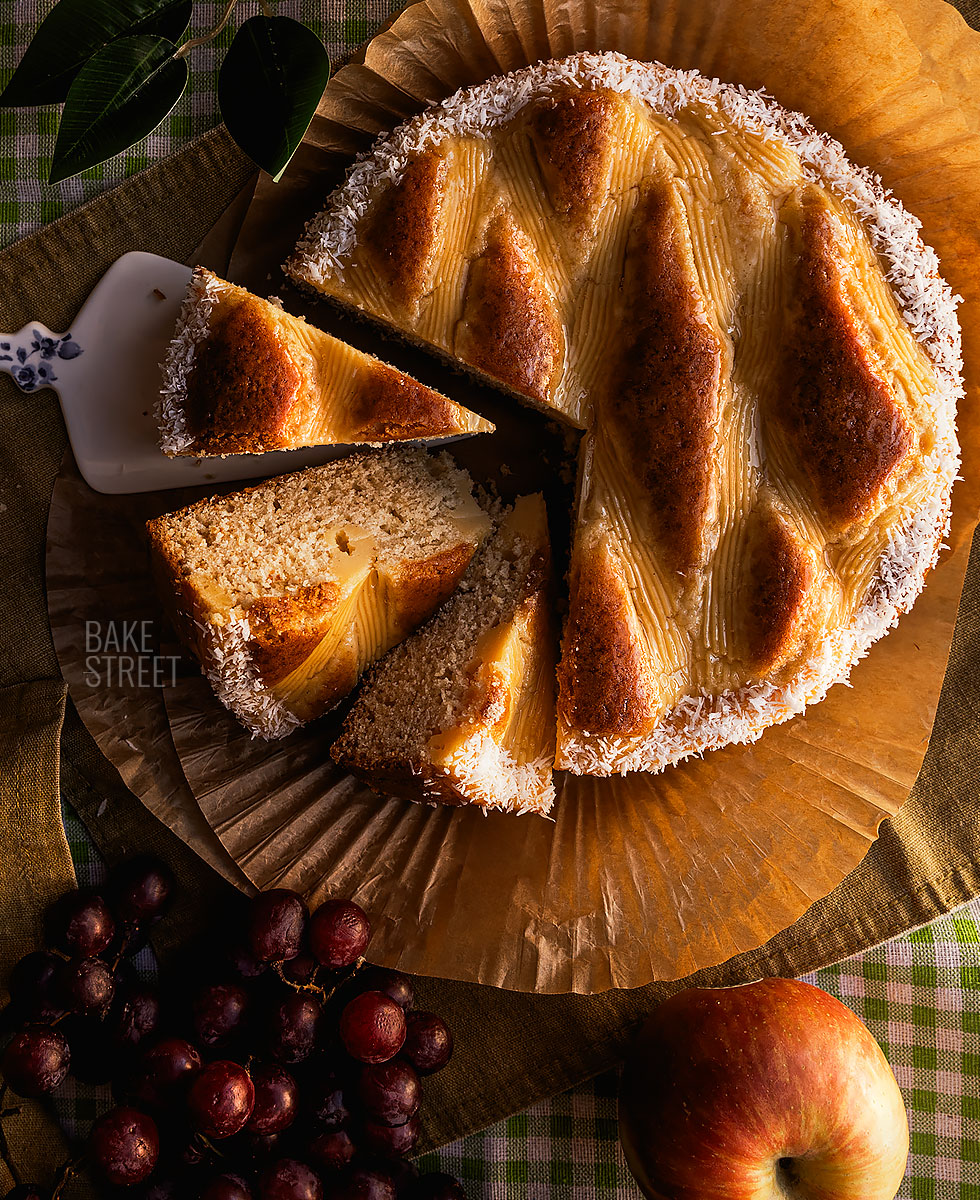
Small differences between Torta Matera and Torta Nua.
Basically in the arrangement of the pastry cream. Matera cake, as I show you, has a top decoration of pastry cream creating a pattern. Torta Nua, on the other hand, has a simpler decoration. Once the cake batter is poured into the mold, the custard is arranged in small mounds, distributed alternately on the cake, and if desired, spirals can be created with a toothpick on the surface.
This process, with a correct formula, gives a beautiful result. Otherwise, all the cream goes to the bottom. As a detail, it is also worth mentioning that the nua cake uses more pastry cream than the matera cake.
Recipe Torta matera, Argentinean sponge cake with pastry cream
SPONGE CAKE:
- 300 g cake flour, sifted
- 200 g sugar
- 145 g whole milk
- 1 large egg
- 55 g sunflower oil or light olive oil
- 8 g baking powder
- 1 tsp vanilla extract
- one lemon zest
- pinch of salt
PASTRY CREAM:
- 120 g whole milk
- 125 g heavy cream
- 3 large egg yolks
- 60 g sugar
- 30 g cornstarch
- 1 teaspoon vanilla extract
PECTIN SYRUP:
- 82 g water
- 2,5 g NH apple Pectin
- 50 g sugar
- a few drops of lemon juice (3-4 g)
DECORATION:
- grated coconut
MATERIAL WE WILL NEED AND SHOWN IN THE VIDEO:
- bowls
- whsik
- silicone spatula
- mold 23 cm diameter
- digital kitchen scale
- pastry bag + 6B Wilton noozle
- cooling racks
- pastry brush
Instructions
Prepare pastry cream.
- In a medium saucepan pour the milk together with heavy cream and vanilla. Place over medium heat and bring to a gentle boil.
- Meanwhile, in a large bowl, whisk the egg yolks with the sugar and the previously sieved cornflour until completely homogenised.
- Once the milk has come to the boil, pour some of it over the egg yolk mixture.
- Whisk quickly to temper the yolks and prevent them from curdling into lumps.
- Stir in the rest of the milk little by little, mixing very well each time.
- Pour the mixture back into the pan and place over medium-low heat, stirring constantly. You will notice that the texture will gradually become thicker, but it will take a while. Patience.
- Once at this point, remove from the heat.
- Pour into a tray/tupper/bowl (the larger the better because it will cool faster).
- Cover with cling film to prevent it from setting and leave to cool completely.
- Allow to cool completely before using. If desired, it can be made the day before and refrigerated until the next day.
- NOTE: It is important that the cream is cold to pipe it over the cake. Once cooled, I recommend refrigerating it for a minimum of 3 hours before using it.
Prepare sponge cake.
- Grease a mold with butter and line it with baking paper. If you prefer, you can sprinkle it with flour, removing the excess. Set aside.
- In a bowl, beat the egg with the milk and sugar until smooth.
- Pour the oil, little by little while beating the mixture.
- Add the lemon zest along with the salt and vanilla, mix again.
- Once it is integrated, begin to incorporate the sifted flour along with the baking powder little by little. Add a small amount and mix with the whisk using gentle movements. You should only mix until the flour is integrated, not longer. Otherwise the gluten may start to develop, which will result in a denser and more compact cake.
- Pour the mixture into the mold and smooth the surface.
Pipe pastry cream and bake.
- Preheat the oven to 347ºF/175ºC, heat up and down.
- Whip the pastry cream before putting it in the piping bag, so that it acquires a creamy and smooth texture.
- Put it in the piping bag with the specified nozzle, or another of your choice, and proceed to decorate the cake.
- Pipe on the surface of the batter, unbaked, forming a grid or lattice.
- Bake for 45 minutes or until a toothpick inserted in the center comes out clean.
- Cool completely on a wire rack.
- Once cooled or lightly warm, carefully unmold.
Make pectin syrup.
- Add water to a saucepan and place over medium heat.
- While it is heating, mix the sugar with the pectin.
- When the water begins to be hot, but not boiling, add the sugar and pectin mixture, little by little, while stirring constantly with a whisk.
- Cook over medium heat, stirring constantly, until it comes to a boil.
- At this point, remove from heat.
- Add the lemon juice, mix and pour into a glass container.
- Allow to cool completely before using.
Decorate.
- Brush the surface of the sponge cake with syrup, syrup, honey diluted with water or apricot jam (previously tempered).
- Sprinkle the edges with grated coconut.
- Serve.

Notes
- I used a 23 cm mold, but you can use a 22 cm or 24 cm mold. I only recommend you to watch the final baking time, minute up or down, to obtain a good result. It is not necessary that it is removable, as you can see in the video, the cake comes out unmolded without problems.
- To make the custard I used a mixture of milk and cream, but you can use only milk if you prefer. I like to add cream because thanks to the high fat content, the result is creamier.
- Don't forget to temper the yolks to prevent them from curdling and forming lumps.
- Be patient when you are making the pastry cream, it takes a while to set and gain consistency.

- Do not be tempted to increase the heat because you run the risk of burning some part of the base and transferring the flavor to the cream.
- It is very important that the cream, when you pipe it, is cold as I detail.
- Lemon zest is usually used to flavor the cake, but you can omit it if you wish. Or use orange or tangerine zest.
- If the pectin syrup gels too much, you can give it a light heat in the microwave to lighten it.
- If you do not like shredded coconut, you can omit it or replace it with nuts.
- It can be kept at room temperature for 3-4 days, wrapped in cling film or in a container for preserving cakes and biscuits. The baked cream will keep in perfect condition, without spoiling, at room temperature.

I assure you that you will really enjoy this Torta Matera, Argentinean sponge cake with pastry cream inspired by the classic Torta Nua. Not only is the elaboration process attractive, which is done in the blink of an eye, but it is also one of those elaborations that you really enjoy when you eat it. Simple, but full of flavor, aroma and with a wonderful texture.
By the way, I remind you that you can watch all my videos on my YouTube channel. If you subscribe and turn on the little bell, I will be eternally grateful!
I wish you a wonderful Sunday afternoon!
Lots of love,
Eva
